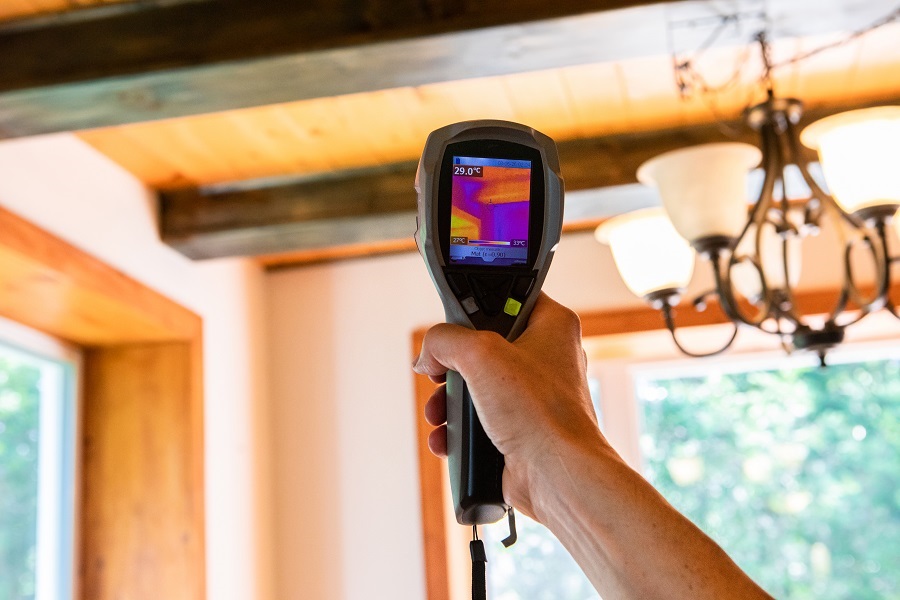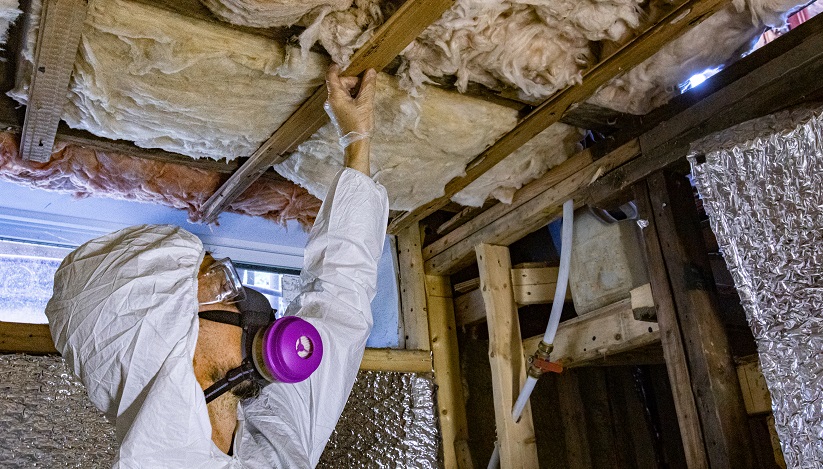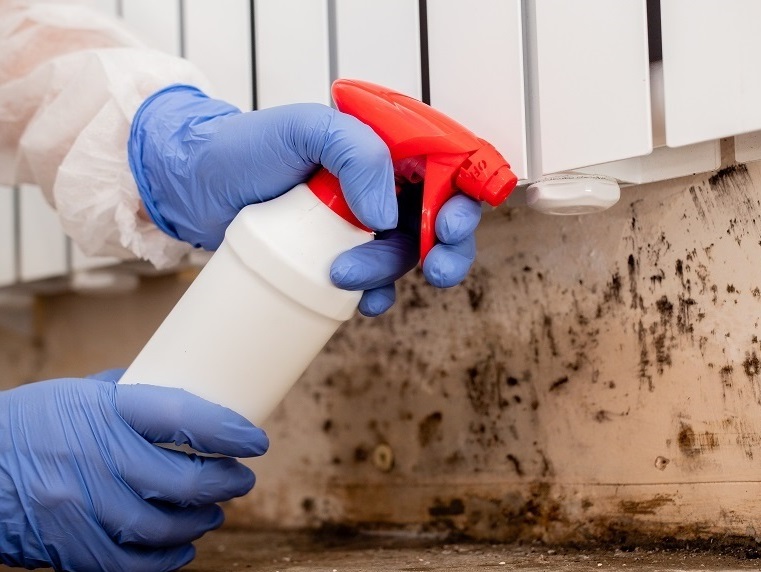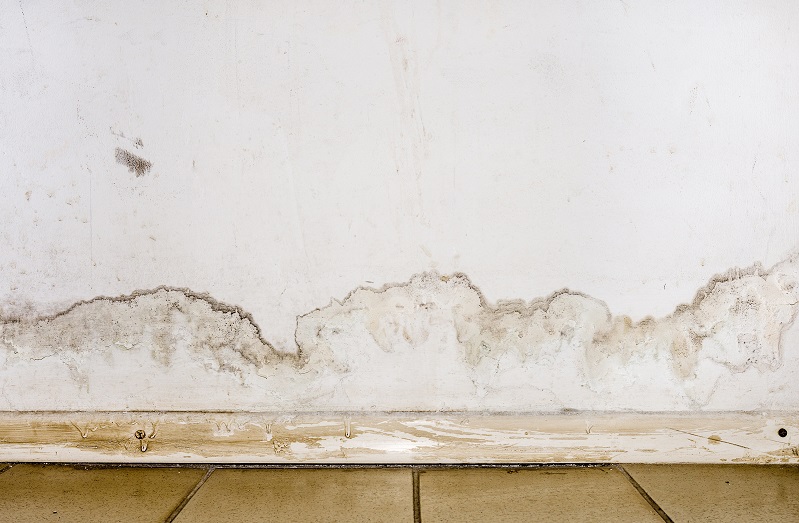What is Wet Rot?
This is a type of parasite which can be found in wet timber. It disturbs the timber, causing it to swell and the fibres to begin separating, leading to crumbling and loss of strength in the structural timber. Wet rot can expedite decay in timber, making it lose structural integrity and to eventually break. Incessant contact with sources of moisture is the primary cause of wet rot in structural wood. This may be from the ‘wet’ side of a house, penetrating damp or faulty plumbing. Wet rot is fungi that can spread and inflict damage on neighbouring timbers.

What is the Difference Between Dry Rot and Wet Rot?
Dry rot triggers quick and extensive damage to structural timber as it spreads through the affected property. Wet rot, however, occurs more often but is typically less severe; decay in such cases is limited to the area affected by water. When fungi are absent, dry and wet rot can be differentiated by considering the difference in timber colour and the extent of damage noticed on the timber according to the progression of either type.
What causes Wet Rot?
Wet rot spores are only present in certain environmental conditions. Moist timber is the main cause of Wet Rot. Moisture facilitates the growth of the Wet Rot fungus. Consequently, signs of damage become visible on the decaying timber.
The Dangers of Wet Rot in Penge
Wet rot is a devastating problem. It can destroy your home and ruin its value. When you notice wet rot, make sure to treat it quickly, if not there is a high likelihood of it spreading and infecting your house. Recent surveys of 2,038 London homeowners asked whether they experienced wet rot, where the rot had taken hold and whether they were able to stop it recurring in the future.

Damp Proofing Can Help Prevent
- Rising / Penetrating Damp
- Ingress of Water
- Salt Crystallization
- Plaster Breakdown
- Damp Staining
- Wet Rot / Dry Rot
What are the Warning Signs of Wet Rot?
Signs of Wet Rot or the conditions needed by the fungus to become pervasive can vary depending on type cause of moisture with a property. Easy to spot signs include the wallpaper peeling off at the corners, the central heating boiler malfunctions, cookers don’t work properly, and/or a musty smell is present. Common areas where you can find wet rot include underneath the kitchen sink, along external walls, and roof spaces/attics. Wet rot typically attacks older buildings constructed using timber frames rather than modern species such as Meranti and Sapele. Timber that is found below ground level or reaching a one-floor level is susceptible to wet rot as well. Being able to identify wet or dry rot is a big part of managing its growth. If you believe your home has a wet rot infestation, a damp survey is necessary.
Contact Southern Damp Proofing Now to Speak With an Expert
How and When Should I Look for Wood Rot?
Searching your home for any signs of wood rot or damp should be done annually, just like spring cleaning. The period just before winter; during your weatherproofing activities, is a good time for it. The inspection requires a long-handle screwdriver as well as a powerful flashlight.

Use the flashlight to examine the wood in the crawl room or basement for discolouration around the border wood plate sitting directly on the concrete wall. Use the screwdriver test wherever necessary. Examine walls and floors for signs of water leaks or discolouration under sinks, around tubs and baths, and the water heater.
How do we identify wet rot?
Unfortunately, detecting wet rot is not an exact science, wet rot can affect timber in several distinct ways. If a knife pushed into painted timber goes in right up to its handle, that’s a certain indication of rot.
Our specialist damp proofing experts have years of experience and are trained to look for the following:
- Localised fungal growth on timber
- The soft, spongy feel of timber; the affected area appears darker than the surrounding timber.
- The soft and spongy texture of rotting timber; the affected region often looks darker than the other parts.
- That spongy, soft feel timber gets when affected by wet rot; the affected parts are darker than the other areas.
- The spongy, soft texture of rotten timber; the infested area is darker than the other parts.
- The springy feeling that is an indicator of wet rot; the affected area is often darker than others around it.
- Crumbling of affected dry timber into particles.
- Dry timber crumbling into particles.
- The crumbling of infested timber into dry particles.
- Dried-out timber disintegrating into particles.
- The disintegration of rot-eaten timber into particles.
- Shrinking timber
- Bleaching wood in window and door frames
- Flaky or damaged paint
- A musty, damp smell
What to Do After You Detect Wet Rot?
It’s important to get a damp expert to tackle wet rot and cut off the source of moisture; this helps prevent recurring issues. Call Southern Damp Proofing on 020 7971 1329 today to get more information about wet rot treatments.
Wet Rot and Damp Proofing in Penge
If you need damp proofing services or wet rot treatment in Penge, you are on the right page. Call us immediately you spot any indication of damp or wet rot in timber around the house. By helping you fix the problem, you can save money on expensive repairs and also minimise the health risks attached to letting the decay progress unimpeded. Our qualified surveyors will help you identify the cause of the issue and the best steps to take in rectifying it.

Contact Southern Damp Proofing Now to Speak With an Expert
Wet Rot Treatment Specialists in Penge
With over ten years of experience in the field, we are one of the leading wet rot specialists in Penge, offering free surveys and no obligation quotations to householders, landlords and commercial property owners. Our team of experts will visit your property and investigate the source of the wet rot and provide advice on the next steps to take to get rid of it. Our team of experts can diagnose and treat all types of wet rot in properties using advanced methods.
Wet Rot Treatment in Penge
Wet rot can be found predominantly in areas that are constantly exposed to moisture. We consider the source of the problem as well as the affected area during wet rot treatment. We examine the pathways moisture takes in reaching the timber and block them all off, eliminating the possibility of a repeat case. You should make sure wet rot treatment is handled by professionals to guarantee the best results. Delay in treatment results in pricey repair work down the line. The best thing to do when you notice signs of wet rot or damp is to call experts such as Southern Damp Proofing for help. We have the skills to get rid of wet rot. Southern Damp Proofing can help you save your timber, we quickly investigate the source of the humidity and which areas are under threat of decay. Delaying could be fatal, call 020 7971 1329 today or fill the contact form to save your timber!
Our Wet Rot Treatment Process in Penge
The more you wait, the worse the damage gets. If you recognise the presence of wet rot early enough, the treatment can be restricted to a small area. In situations where the rot has advanced across your timber’s breadth, you may need to get replacements for full timber beams or take on major repair work. Treating wet rot entails various procedures. The treatment of any fungus-related problem involving timbers must begin by preventing the timber from getting damp. If there is a seepage of water into your home or timber, regardless of whether the cause is broken guttering, condensation, or anything else, we locate the source of water/moisture ingress and take corrective action. Inexperienced contractors and builders tend to focus on replacing the decayed wood. Chemical Preservatives are then applied to the area in question after replacement. This method will end in disaster. If you are having problems with wet rot in your building, contact Southern Damp Proofing today. We can help you eliminate the problem.
What happens to Wet Rot if left untreated?
Overlooking wet rot can only lead to weakened structural timber which could have dire consequences for the residents. The timber gets soft and spongy as rot sets in, this means it will cave in when prodded with a sharp-edged object like a knife or screwdriver. The long-term result is a loss of structural integrity in the timber, which could eventually lead to your building being condemned. Call Southern Damp Proofing on 020 7971 1329 and speak with one of our Experts in Wet Rot Treatment today!
Contact Southern Damp Proofing Now to Speak With an Expert
What is the cost of Wet Rot Treatment in Penge?
The effects of rot are devastating for any property. The cost of repair work and damp proofing will vary based on the type and severity of the infestation, but that shouldn’t deter you. With our team of experts on hand to help, you’ll quickly discover that with wet rot treatment in Penge, it is more affordable than you would expect. We advise you on the right decisions for the wellbeing of your family and your home.
How to prevent wet rot?
To prevent decay, the wood must be kept dry and free of moisture. You can also apply wood hardeners to protect the timber from the effects of rot. The wood becomes more resistant to moisture when coated with the hardener. Areas that are more prone to damage from damp include window boxes and sills, and timber in close contact with stonework without being subjected to damp proofing treatment like the use of sealants or fungicides.
Talk to Our Wet Rot Treatment Experts Today!
If you seek further information to help you select the treatment of wood rot that would best serve your needs, don’t hesitate and call 020 7971 1329 to talk to a Wet Rot advisor at Southern Damp Proofing.
FAQs
Is there a DIY treatment solution?
Can Wet Rot Cause Health Problems?
Is Wet Rot Capable of Spreading?
For Top Quality Damp Surveys & Treatments
Other Areas We Cover
- Wet Rot Treatment in Newham, London
- Wet Rot Treatment in Northolt, London
- Wet Rot Treatment in Northwood, London
- Wet Rot Treatment in Orpington, London
- Wet Rot Treatment in Paddington, London
- Wet Rot Treatment in Pinner, London
- Wet Rot Treatment in Poplar, London
- Wet Rot Treatment in Purley, London
- Wet Rot Treatment in Putney, London
- Wet Rot Treatment in Rainham, London